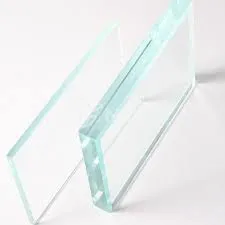The Advantages of Low Iron Float Glass
Low iron float glass has gained substantial popularity in various applications due to its remarkable clarity and aesthetic appeal. Unlike standard float glass, which contains iron oxide that imparts a greenish tint, low iron float glass features reduced levels of iron, resulting in a much clearer and more transparent material. This unique characteristic has made it a favored choice in architectural design, automotive manufacturing, and the production of high-end consumer products.
One of the primary benefits of low iron float glass is its exceptional light transmission. This type of glass can transmit up to 90% of visible light, making it an ideal option for applications where natural light is desirable. For instance, in modern architecture, large glass facades constructed with low iron float glass allow for maximum daylight to penetrate interior spaces, reducing the need for artificial lighting and contributing to energy efficiency. This feature not only enhances the aesthetic appearance of buildings, making them appear sleek and contemporary, but also creates a more comfortable and inviting atmosphere for occupants.
In addition to its outstanding clarity, low iron float glass is also durable and resistant to scratching, making it suitable for a variety of environments. When tempered or laminated, it can withstand significant force and is less prone to shattering. This durability makes it an excellent choice for glass railings, shower doors, and other installations where safety and strength are paramount.
low iron float glass
The versatility of low iron float glass extends to its use in solar panel production. Its high light transmission properties enable solar cells to generate more energy, thus improving overall efficiency. As the world increasingly shifts towards renewable energy sources, low iron glass plays a crucial role in maximizing the performance of solar energy systems.
Another appealing aspect of low iron float glass is its ease of customization. It can be processed in numerous ways, including cutting, shaping, and coating, allowing for limitless design possibilities. Whether used in interior design, artwork displays, or furniture manufacturing, low iron glass can be tailored to meet specific aesthetic and functional needs.
Environmentally conscious consumers and manufacturers appreciate that low iron float glass is recyclable, aligning with sustainable practices. The production process can also be optimized to minimize energy consumption and reduce waste, making it a responsible choice in an era that prioritizes environmental stewardship.
In conclusion, low iron float glass is a versatile, high-performance material that offers numerous advantages, including exceptional clarity, durability, and customization options. As industries continue to embrace innovative building materials, low iron float glass will undoubtedly remain at the forefront, enhancing designs while contributing to sustainability and energy efficiency.
 Afrikaans
Afrikaans  Albanian
Albanian  Amharic
Amharic  Arabic
Arabic  Armenian
Armenian  Azerbaijani
Azerbaijani  Basque
Basque  Belarusian
Belarusian  Bengali
Bengali  Bosnian
Bosnian  Bulgarian
Bulgarian  Catalan
Catalan  Cebuano
Cebuano  Corsican
Corsican  Croatian
Croatian  Czech
Czech  Danish
Danish  Dutch
Dutch  English
English  Esperanto
Esperanto  Estonian
Estonian  Finnish
Finnish  French
French  Frisian
Frisian  Galician
Galician  Georgian
Georgian  German
German  Greek
Greek  Gujarati
Gujarati  Haitian Creole
Haitian Creole  hausa
hausa  hawaiian
hawaiian  Hebrew
Hebrew  Hindi
Hindi  Miao
Miao  Hungarian
Hungarian  Icelandic
Icelandic  igbo
igbo  Indonesian
Indonesian  irish
irish  Italian
Italian  Japanese
Japanese  Javanese
Javanese  Kannada
Kannada  kazakh
kazakh  Khmer
Khmer  Rwandese
Rwandese  Korean
Korean  Kurdish
Kurdish  Kyrgyz
Kyrgyz  Lao
Lao  Latin
Latin  Latvian
Latvian  Lithuanian
Lithuanian  Luxembourgish
Luxembourgish  Macedonian
Macedonian  Malgashi
Malgashi  Malay
Malay  Malayalam
Malayalam  Maltese
Maltese  Maori
Maori  Marathi
Marathi  Mongolian
Mongolian  Myanmar
Myanmar  Nepali
Nepali  Norwegian
Norwegian  Norwegian
Norwegian  Occitan
Occitan  Pashto
Pashto  Persian
Persian  Polish
Polish  Portuguese
Portuguese  Punjabi
Punjabi  Romanian
Romanian  Russian
Russian  Samoan
Samoan  Scottish Gaelic
Scottish Gaelic  Serbian
Serbian  Sesotho
Sesotho  Shona
Shona  Sindhi
Sindhi  Sinhala
Sinhala  Slovak
Slovak  Slovenian
Slovenian  Somali
Somali  Spanish
Spanish  Sundanese
Sundanese  Swahili
Swahili  Swedish
Swedish  Tagalog
Tagalog  Tajik
Tajik  Tamil
Tamil  Tatar
Tatar  Telugu
Telugu  Thai
Thai  Turkish
Turkish  Turkmen
Turkmen  Ukrainian
Ukrainian  Urdu
Urdu  Uighur
Uighur  Uzbek
Uzbek  Vietnamese
Vietnamese  Welsh
Welsh  Bantu
Bantu  Yiddish
Yiddish  Yoruba
Yoruba  Zulu
Zulu 

